Sacred Valley, Peru – Mar 20 2023
Our first day in Cusco (which is at 11,000 feet elevation) was a long full day tour of the Sacred Valley. We had an early morning start from our hotel in Cusco. We met a representative for the tour operator in the Plaza des Armes, the central square for Cusco, around 7:30am. It was fun watching the children in their school uniforms being hurried through the streets by their parents on a rainy morning. The street vendors are very pushy, trying to get you to buy handicrafts, massages or even a photo with the alpacas, which we did.
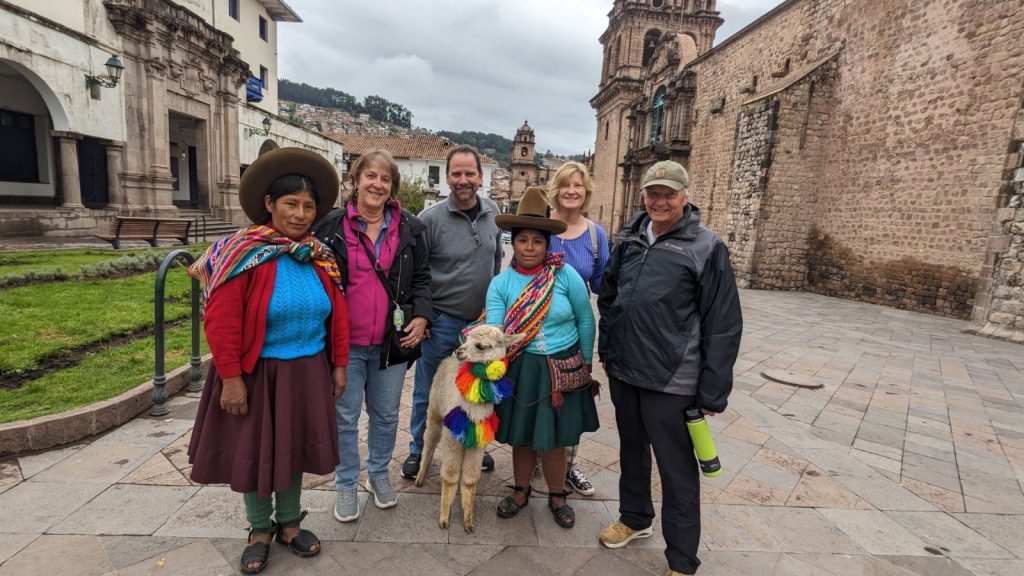
You can book these tours all over town. Everyone pretty much follows the same itinerary and it is a great value – total cost with museum entrances was less than $50 a person and includes lunch. Tips are extra though I have noticed throughout this trip that people often don’t tip the guides.
Our tour included 15 people, mostly Spanish speakers on a mini bus with an excellent guide named Ever. He is fluent in 5 languages and switched between Spanish, English and occasionally French. He has a degree in Anthropology and grew up in the village of Pisac in the Sacred Valley.
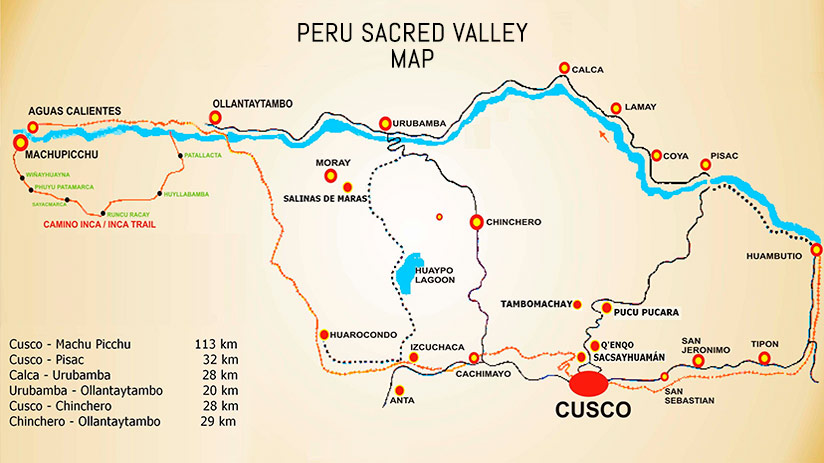
Memorable stops on this very long tour (8am till 7pm) included Pisac Inca archeological ruins, Urubamba for lunch, Ollantaytambo archeology site and Chinchero historic site. In Pisac we stopped at a silver workshop/retail store and in Chinchero a workshop for weaving alpaca products. There were a couple of useless stops at “typical” markets, all selling the exact same merchandise we have seen all over South America and all made in China. The lunch at Maiz in Urubamba was in a nice setting, a buffet lunch of mediocre food. I will focus this blog on the beautiful drive through the valley and the three sites we visited. The tour was very reasonable – 90 soles per person which is about $22 and included lunch but not tickets to the archeaology sites.
The Sacred Valley
The Urubamba Valley was sacred to the Incas. Better known as Valle Sagrado, it is a lovely stretch of small villages and ancient ruins in a fertile, verdant valley that follows the Urubamba River. The valley is tucked between the Peruvian Andes mountains which are a rich shade of green right now. March is the beginning of their fall and is also end of the rainy season. We were lucky that the day turned out to be sunny after a rainy start.
Cusco is at one end of the valley and Machu Picchu at the other end. The guide tried to explain how the river was perceived as a mirror to the Milky Way by the Incas.
The following crops are grown in this region – whit corn, coca and potatoes along terraced mountain slopes. We saw locals in traditional clothing working in the fields by hand.
The ruins we visited were built by the Incas during their short stay of only 95 years in this region, about 500 years before Christ.
The roads were windy and narrow and the bus driver erratic driving made us a little nervous when he passed big trucks on narrow roads. But we made it safely home.
At one of our “market” stops, we bought a single ticket that covers all of the archelogy sites – about $20 for four. I also found a walking stick for $9 at this stop. I didn’t bring my hiking sticks on this trip and felt I would need them in Peru. I was right and I do.
Our first interesting stop was in the village of Pisac, where we first stopped at the jewelry store and then drove to the entrance for the ruins. The ruins at Pisac ae perched high on a cliff with a complex fortress and beautiful views of the valleys and distant terraced field. It is thought that this complex was a royal estate for the Inca emperor Pachacutec. It was certainly a religious templea and ceremonial center. We saw the Templo del Sol and the place where the Incas buried their dead – some in caves on the side of a steep mountain.
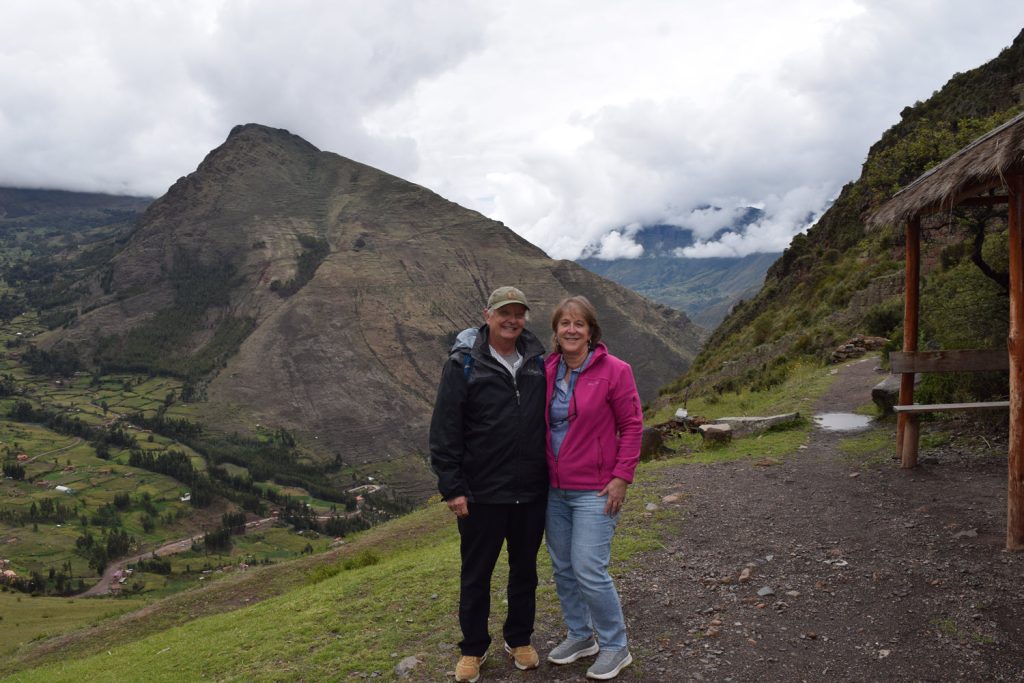
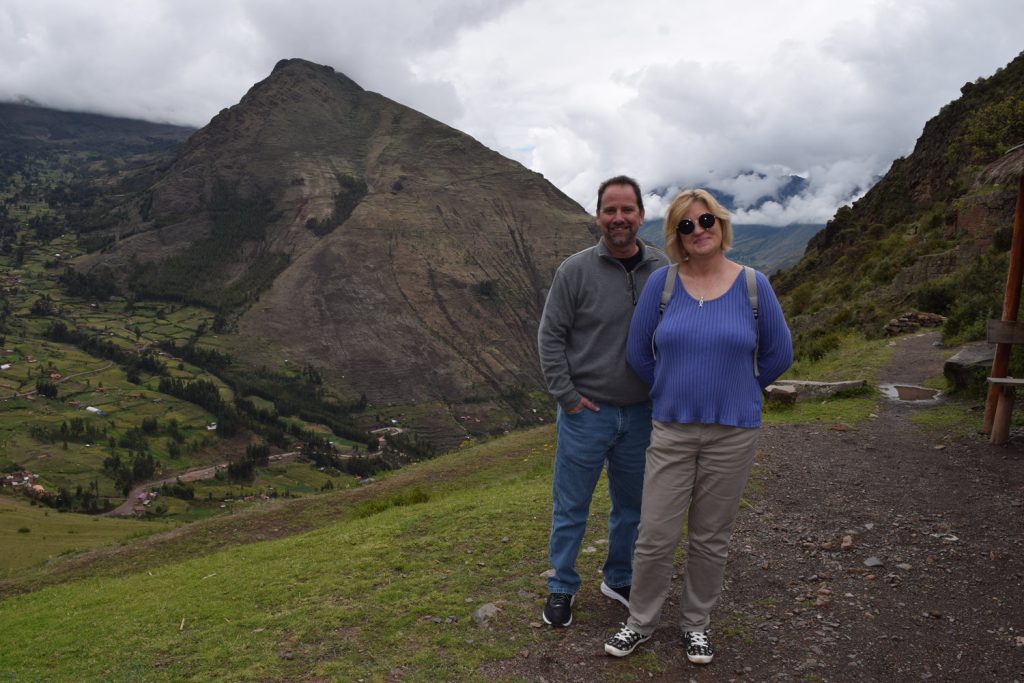
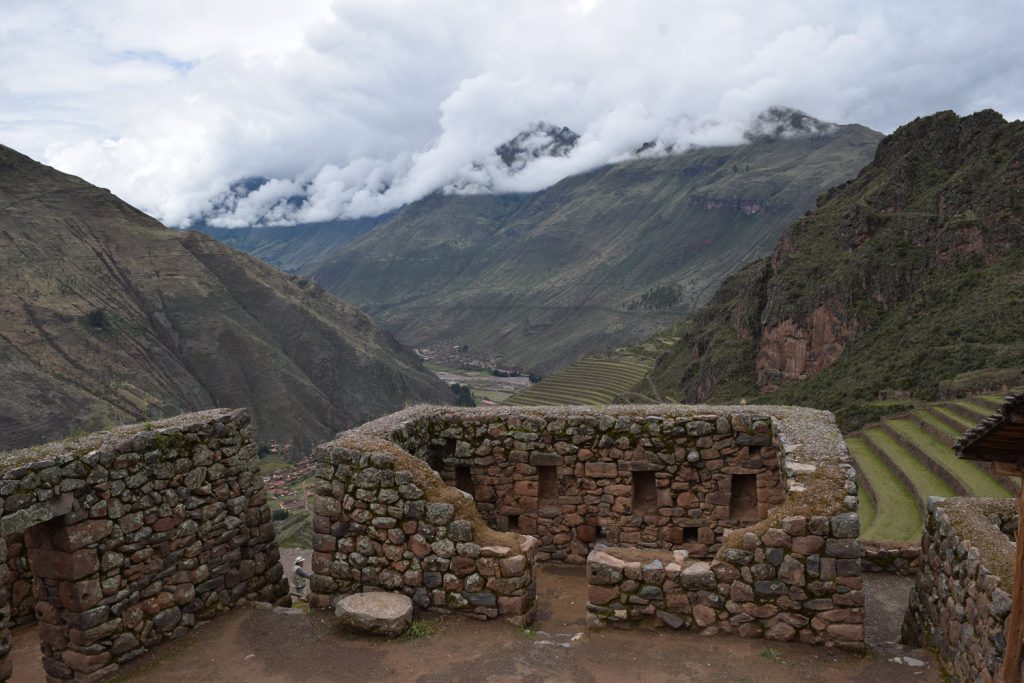
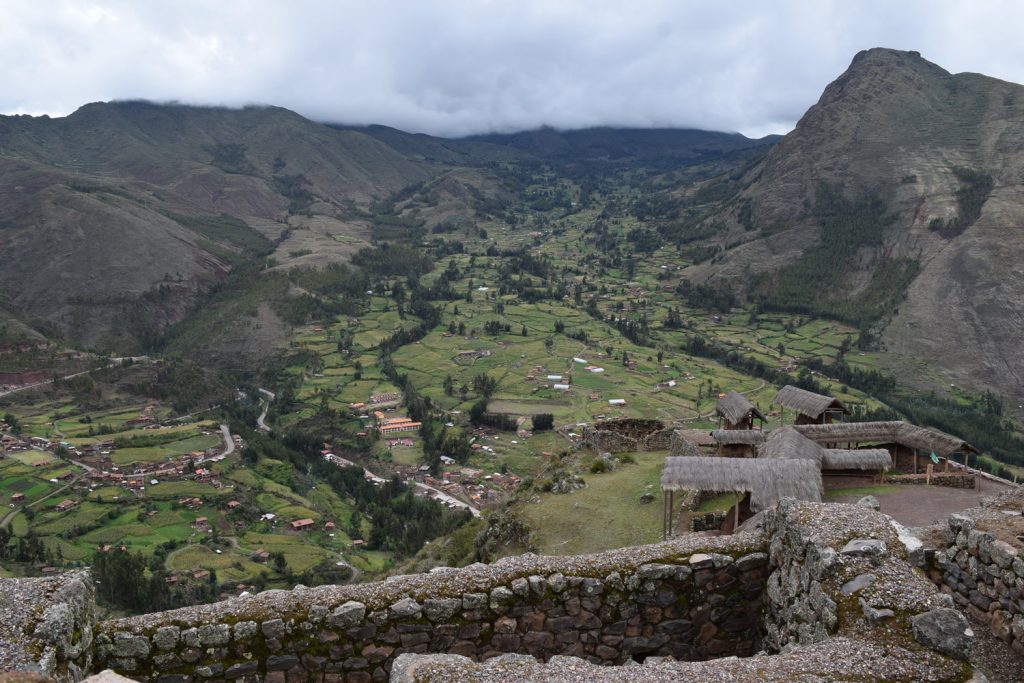
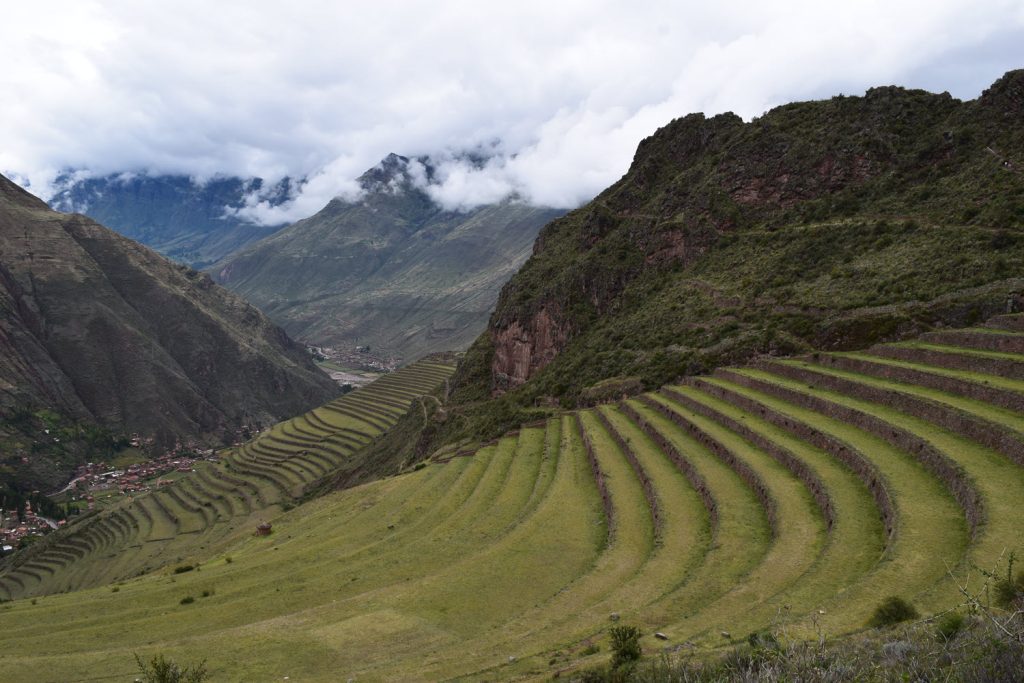
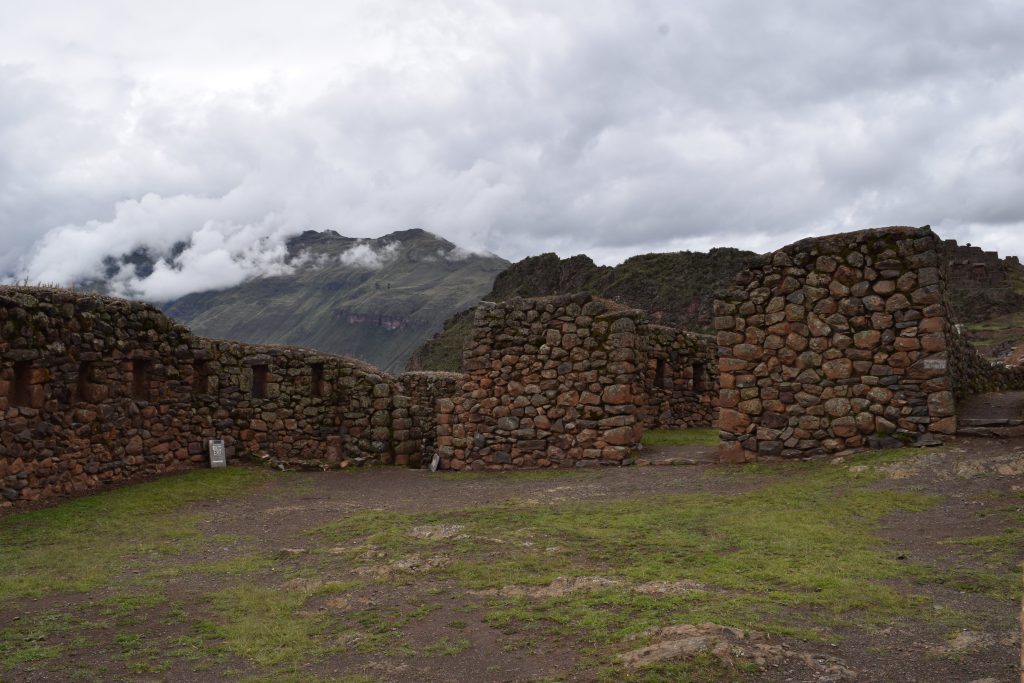
After the mediocre lunch in the village of Urubamba, we headed to Ollantaytambo, located at the northwestern end of the valley. I would have liked to have some time to explore the village but our tour had a lot of ground to cover and we headed straight to the Inca Pachacutec ruins. The town is surrounded by stunning scenery.
The Inca elite built irrigation systems, a temple for worship and astronomical observation and dozens of steep stone terraces carved into the hillside. There are some formidable feats of architecture where huge stone were transported from a quarry across the valley.
We climbed over 250 tall steps to get to the upper section. I debated about every 20 steps if I wanted to keep going. Besides the steep steps the elevation was around 9100 feet. Chris and Bill kept encouraging me and holding my hand as needed. The hike up and down was worth the spectacular views but it knocked me on my a$$ by the time we got home!
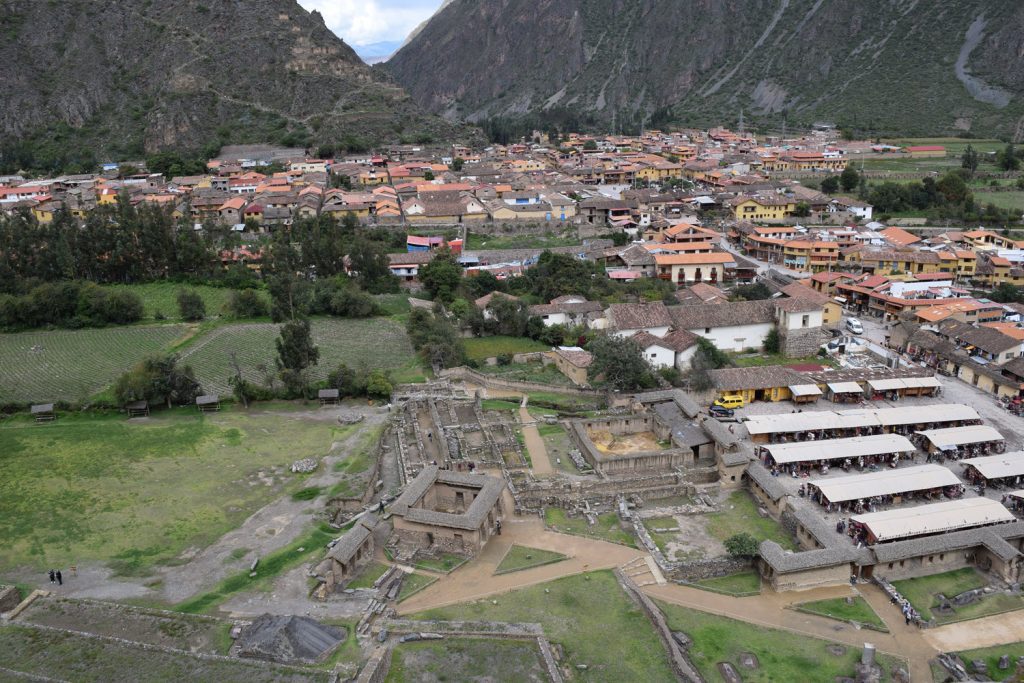
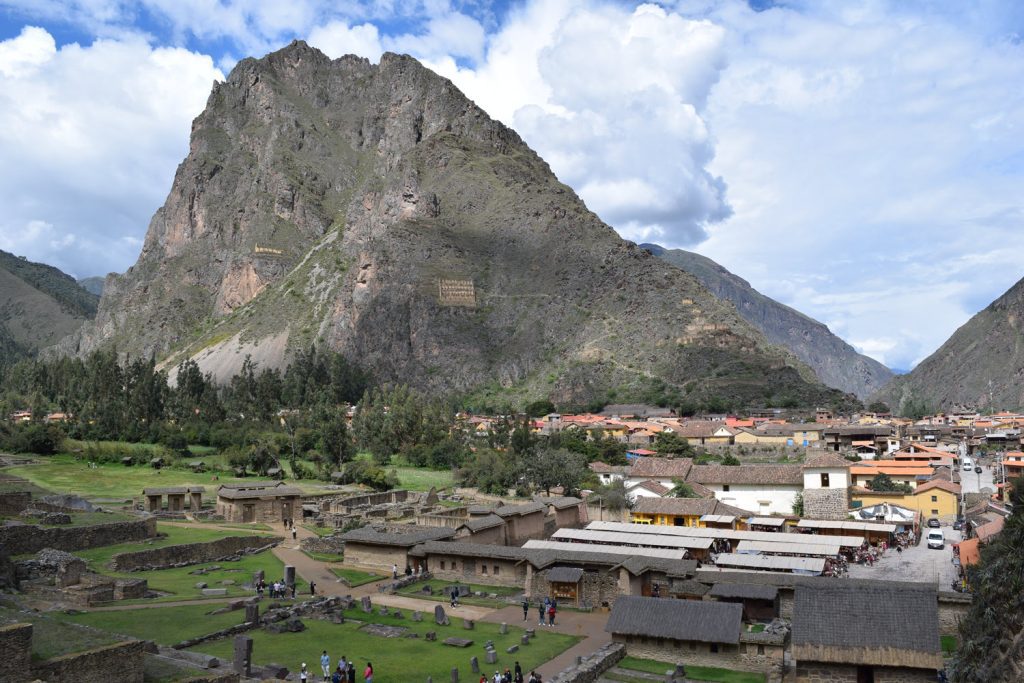
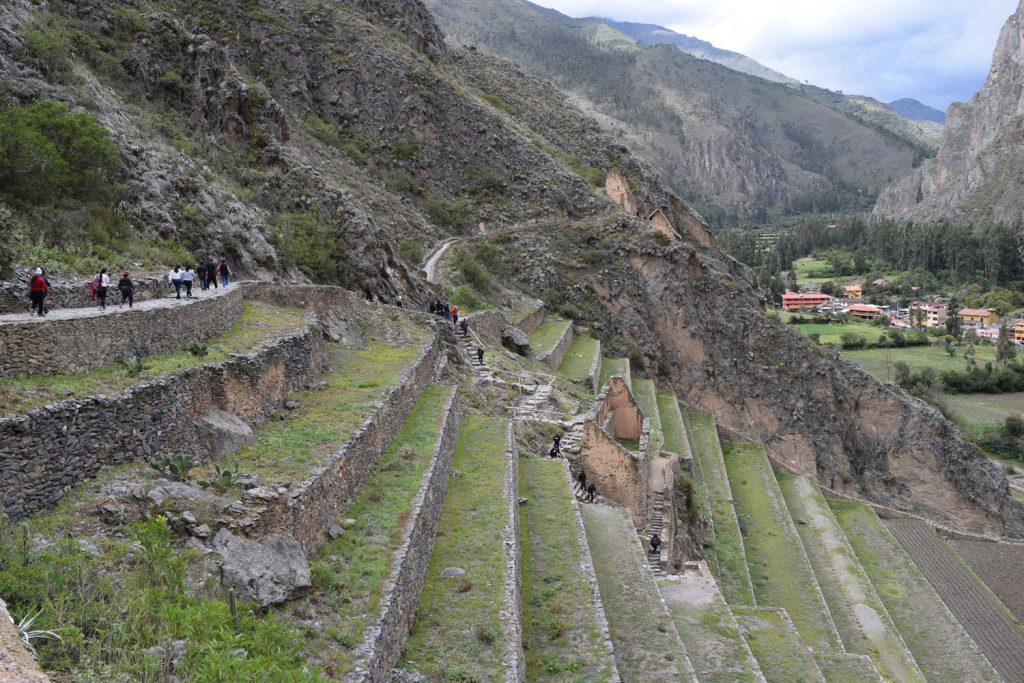
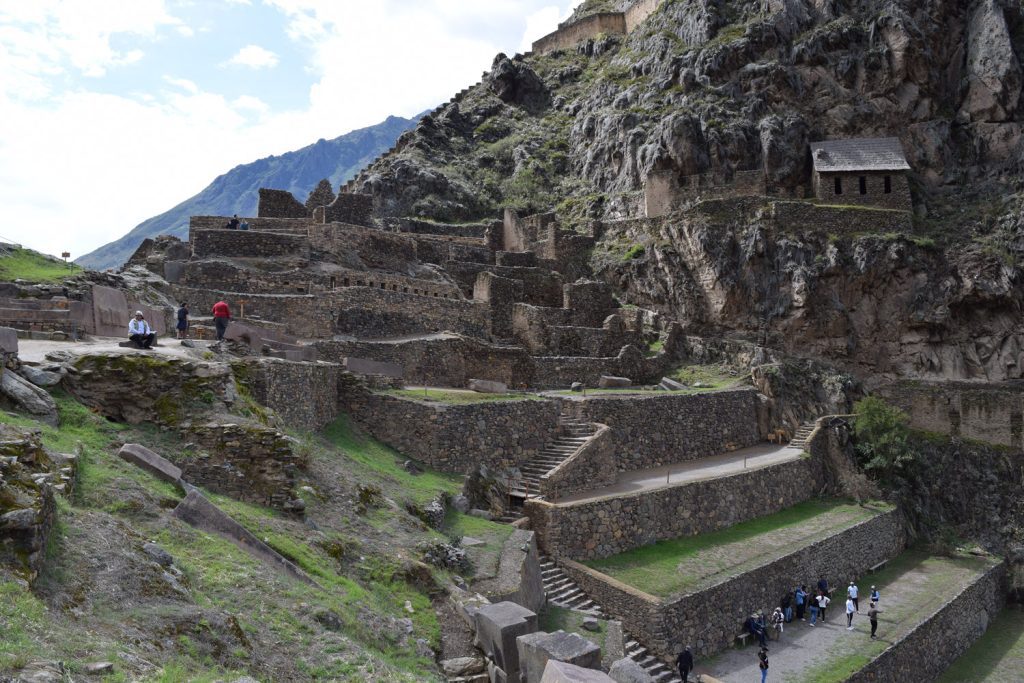
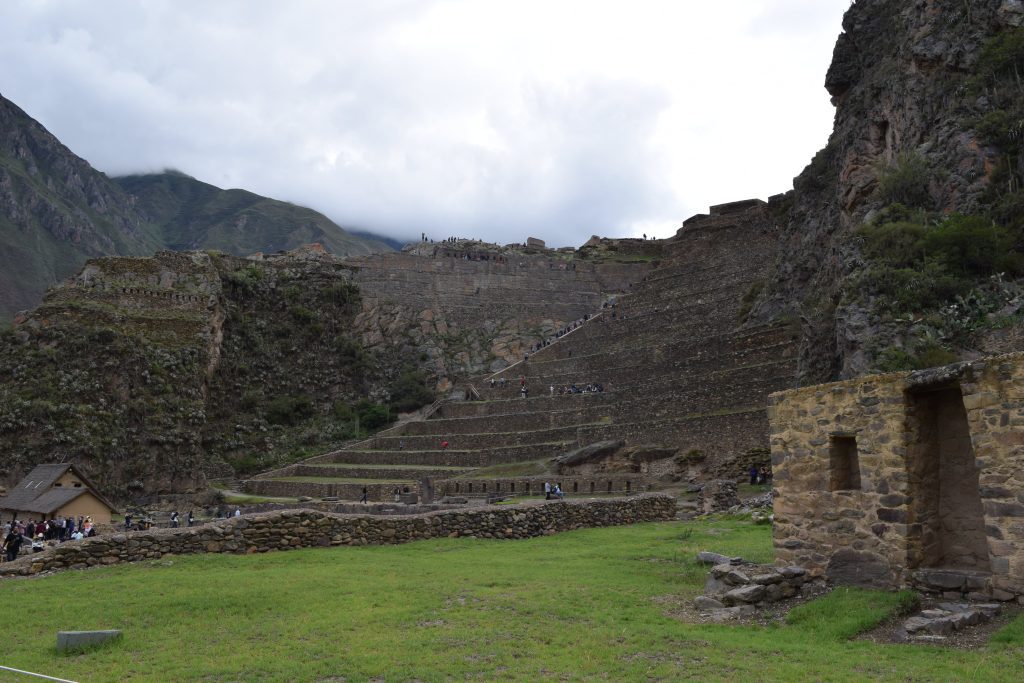
However, on the tour’s third stop at Chinchero I opted out and Bill, Jennie and Chris took the short excursion. Chinchero is located just outside the Sacred Valley at 3800 meters of ft of elevation. The drive there was beautiful. It is a traditional Andean Indian village with 15,000 inhabitants representing 12 different indigenous groups.
We had a delightful visit to the Andean Textile Interpretation Center (and market) where local women demonstrated the process of taking wool from the alpaca, washing and dyeing and weaving into very soft materials that become the many textile garments offered for sale all over Peru. We were assured that they sell the real stuff, made in Peru, from real alpaca wool and not the synthetic garments made in China, also sold all over South America. We bought a few items just because their demonstration was fun. The lead presenter was a pregnant woman very close to giving birth. Notice in the photo, the guinea pigs poking their noses out of their cage. Guinea pigs are a delicacy here, served in many restaurants.
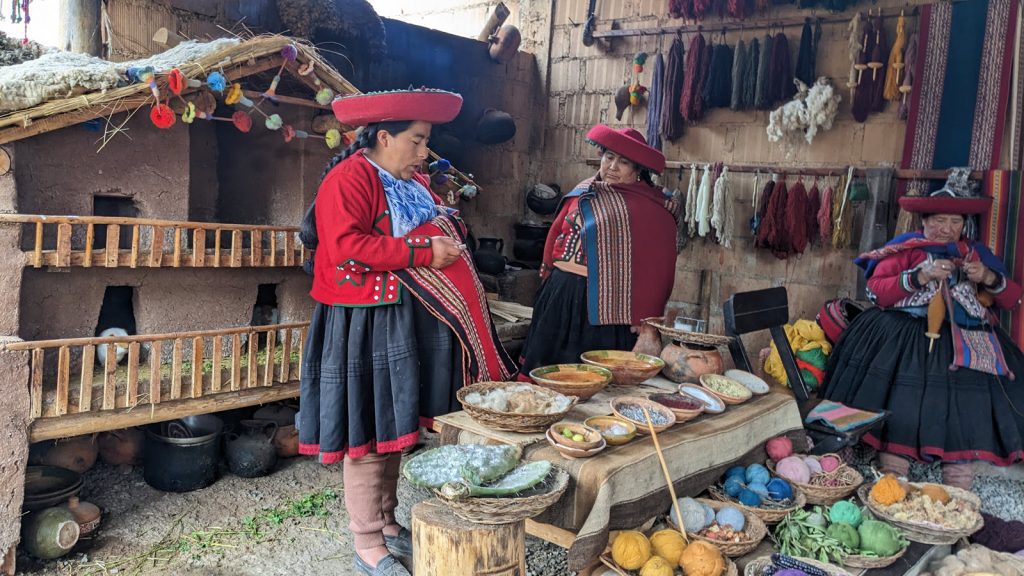
Driving through spectacular vistas, you get distracted by the ramshackle buildings that line the roads and villages, many left unfinished. Some are made of clay and adobe but most of the newer buildings are constructed of brick and cinderblocks. The traditional roofs are red clay tiles but there are many metal roofs as well. We asked one of our drivers, why are so many buildings unfinished. We got the answer we expected – same as in Greece – people build as they have cash and they don’t have to pay taxes on unfinished buildings. Peru remains a poor country despite the onslaught of tourism and their mineral resources.
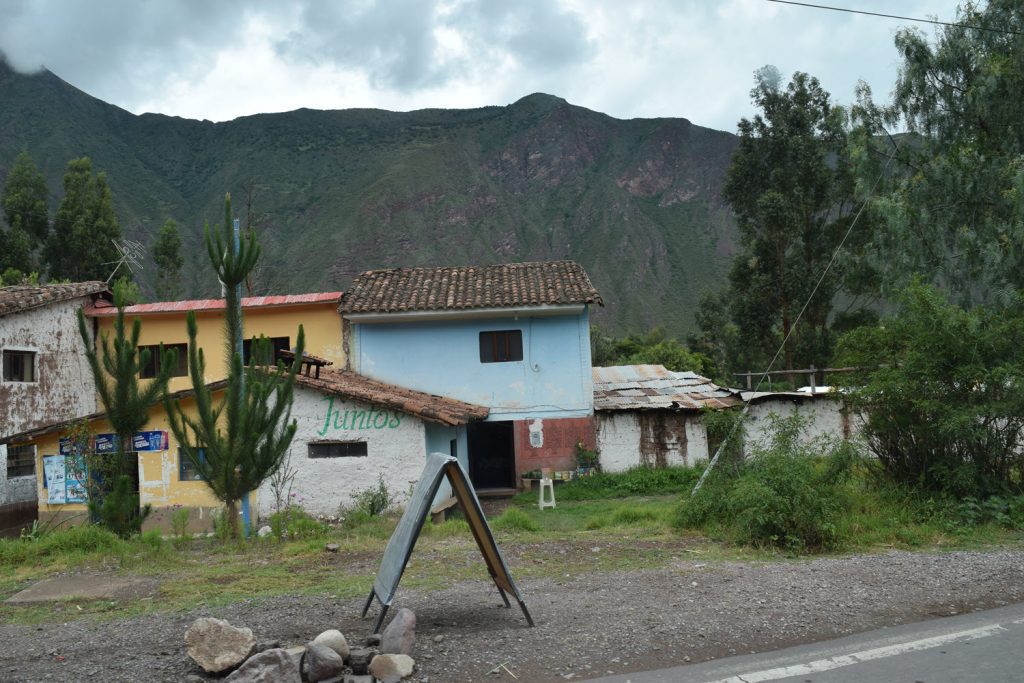
We had another shopping trip at a salt and chocolate shop. This area mines pink salt that is said to have many healing qualities and they make some delicious chocolates. Without the tour bus stops at these small shops, they would not have much business it appears.
We returned to Cusco well after dark, exhausted by satisfied with a full day of exploring the Sacred Valley.
